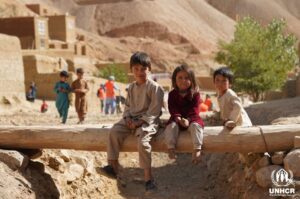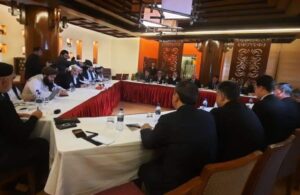Statement
In today’s world, the right to education is one of the most fundamental human rights, which is approved and supported by all governments, and there is no doubt in accepting it as a fundamental human right. This right is confirmed in various human rights documents and gender inequality in education is a clear violation of one of the most fundamental human rights.
In the first paragraph of Article 26 of the Universal Declaration of Human Rights approved in 1948, it is stated: “Everyone has the right to benefit from education.” Likewise, the UNESCO Convention on the Prohibition of Educational Discrimination states: “Deprivation, any discrimination, restriction, discrimination based on sex, religion, race, color, political affiliation, economic or birth, which causes the deprivation of an individual’s equal right to education or a group of people at any level of education is discrimination in education.”
Despite all this, 16 months after the establishment of the caretaker government in Afghanistan, the cabinet ministers voted to suspend the education of girls in the university, and afterwards, a letter was sent to all universities in the country to prevent female students from studying, and subsequently the girls stopped attending.
With the closing of universities to girls, no indepth research has been done on the plight and condition of girls.
Therefore, Salam Afghanistan Media Organisation has launched a survey in 27 provinces to investigate the situation of female students. This way the situation of 307 former university students has been investigated and analyzed.
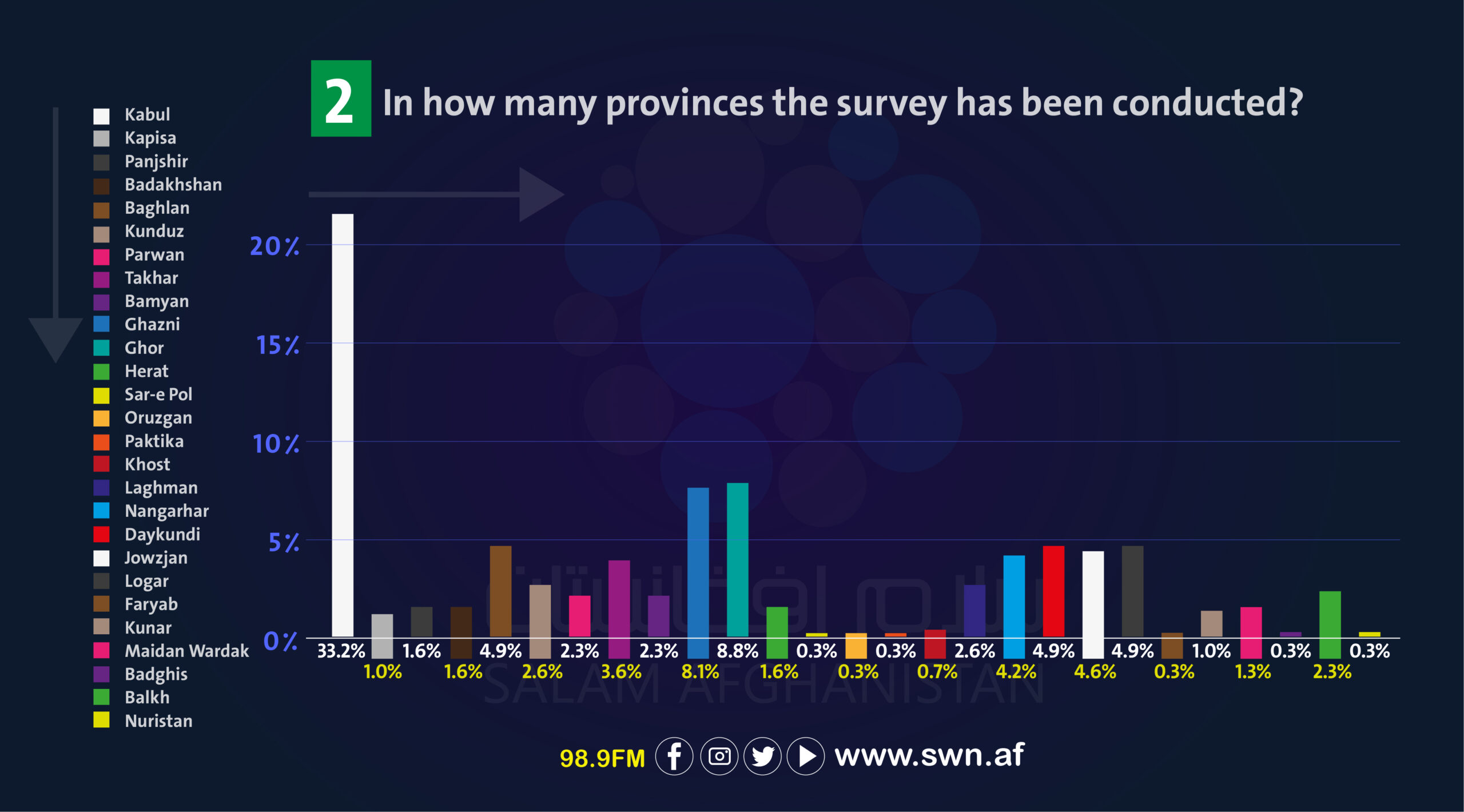
Research background
Regarding the shutting of universities for girls in Afghanistan, countless news reports have been published by various domestic and foreign media, and it has been shown that this deprivation has caused psychological challenges for girls. However, an indepth statistical report that specifically focuses on their situation after the closing of the university has not been prepared.
In order to investigate the situation of female students after the closure of universities in Afghanistan, Salam Watandar has engaged with 307 students in 27 provinces as a sample population in order to be able to analyze their situation. In the process of this research, 307 students participated online and answered the research questions.
Main questions
1: What is the plight of female students after closure of the universities?
2: What ideas and thoughts do the female students have for their future?
3: How do female students view the government and what are their hopes for the reopening of universities?
Research objectives
1- Examining the situation of female students after the universities were closed to them
2- Presenting statistics about the activities of the female students after closure of universities
3- Examining the level of hope of female students for the future.
Research period
This research was prepared during a month and a half (November 15 to December 21 of the current year).
Analysis method
Due to the quantitative nature of this research, the data was prepared by generalizing the questionnaire using Google Document and analyzed and checked using SPSS program and analysis in Google Document.
Research challenges
Carrying out any research work to examine a basic issue related to the educational conditions of women and girls in the Afghan society is a difficult task and full of challenges; especially the issue of Afghan girls’ education, which has become a controversial issue after the closure of universities. Considering these issues, the challenges we faced during this research will be mentioned as well.
1- Investigating the plight of students after universities were closed is a difficult and challenging issue because not many girls were interested in sharing their situation with the media.
2- The majority of students who agreed to participate in this survey were afraid that their identity would be revealed, causing them problems.
3- The level of disappointment was more seen among female students. For this reason, they were willing to participate in this survey.
4: Completing the sample volume for conducting the research was another challenge of the research because with the closure of universities, female students have scattered away to their native areas instead of the centralized locations. For this reason, we had to ask the girls to provide answers in a cluster sampling method.
Research variables
The closure of universities, the situation of female students, the hopes of female students for the future.
Compact report
Most of the students participating in this survey are in the age range of 18 to 24 years. The findings of this report from the survey with 307 female students after dropping out of school show that 52.1% of these students stayed at home after the university closed. 95.4% of these students have said that if the opportunity of study abroad is provided for them, they would decide to continue their studies in another country. On the other hand, 76 percent of the respondents said that they see their future as unclear. 45% are waiting for the decision of the caretaker government to open the universities to girls, and 38.5% have no hope of returning to the university.
General Report
One year after the closing of universities for girls in the country, Salam Afghanistan Media Organisation (Salaam Watandar Radio) launched this survey to investigate the situation of female students after the closure of universities.
This survey was conducted in 27 provinces and 307 female students took part. Kabul with 33.2 percent of respondents had the highest number of respondents and Nuristan, Faryab, Sar-e-Pol, Uruzgan, Paktika and Badghis provinces had the least number of participants in this survey with 0.3 percent. 81 percent of the participants of this survey are between 18 and 24 years old they have.
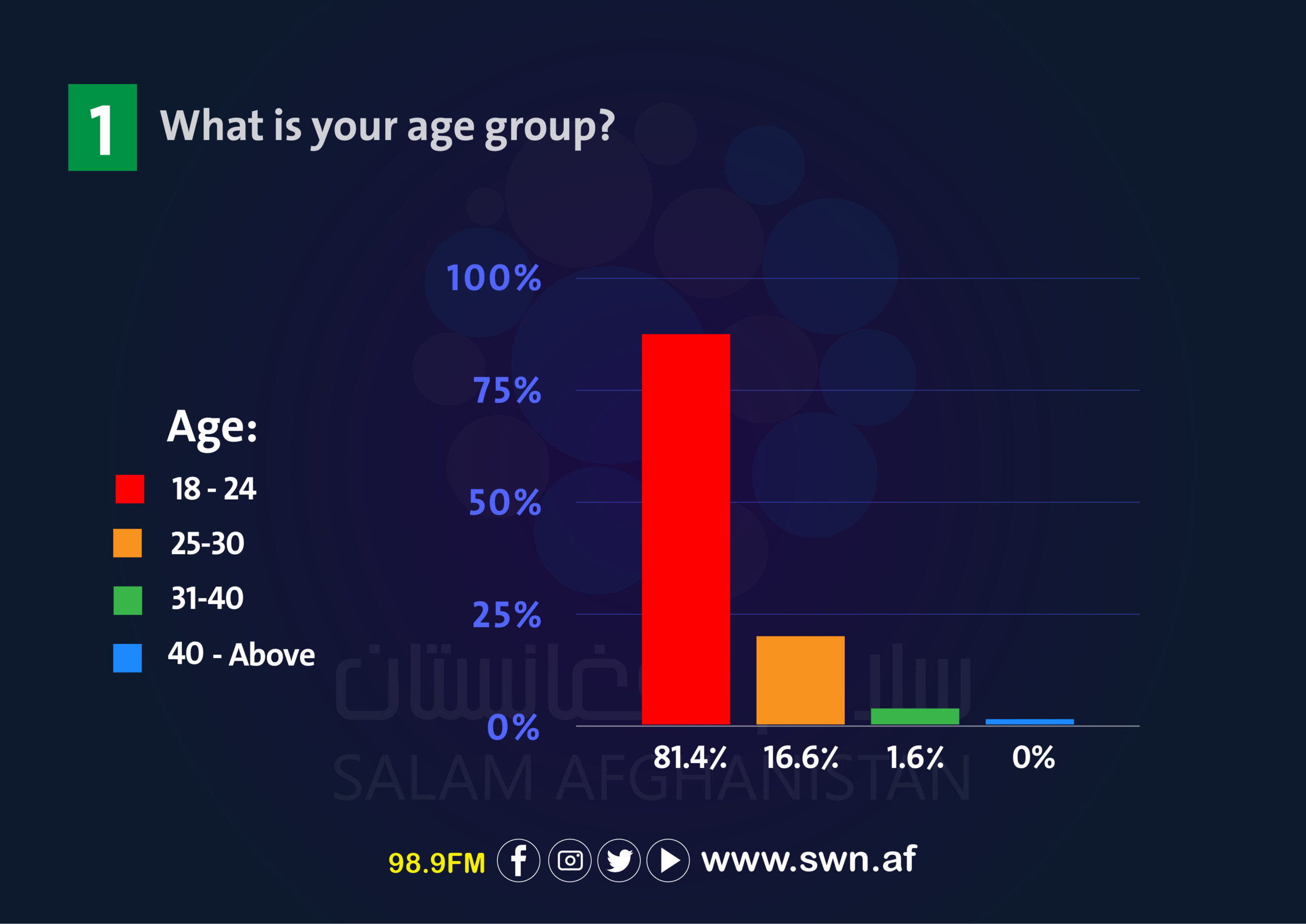
The results of this survey, which examines the situation of female students after the closing of the universities, show that 52% of these girls have been unemployed and staying in their homes for the past year without any plan for life. Also 9% have emigrated, 6% have gone to get married and another 33% said that during this period, they benefited from short-term educational and work programs in different sectors.
In the same way, 95.4 percent of the participants of this survey said that they are willing to migrate abroad to continue their education.
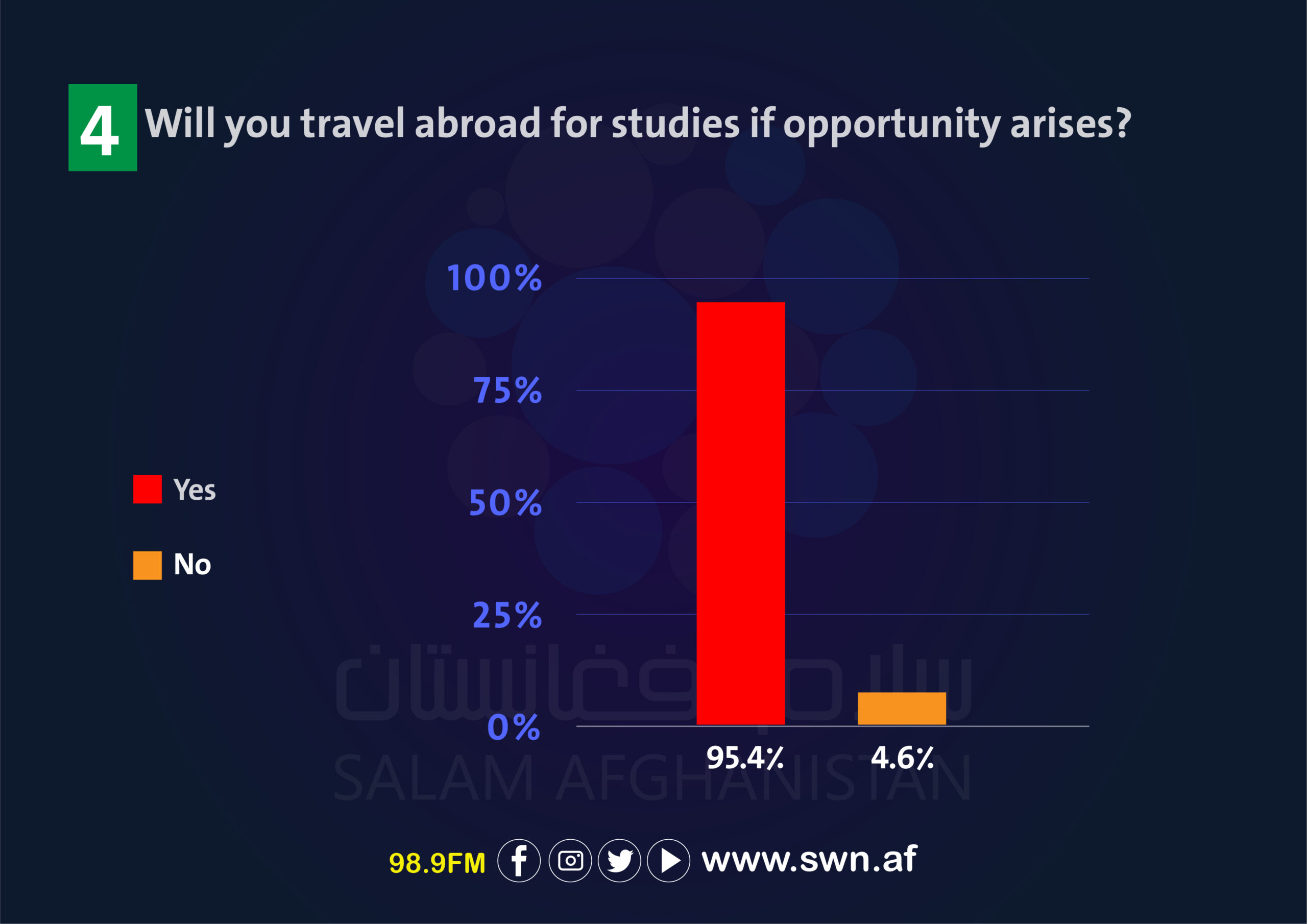
Also, 41.4 percent of the survey participants said that if universities were to be closed to girls in the country, they would decide to study in semi-higher institutions in the medical field. Another 26.7 percent said that they would teach girls below sixth grade, 8.1 percent They have said that they will work in the trade and industry sector and another 24% chose no options of these below:
- Semi-high school education for medical treatment of women
- Teaching for girls lower than sixth grade
- None
- Setting up industrial and commercial works
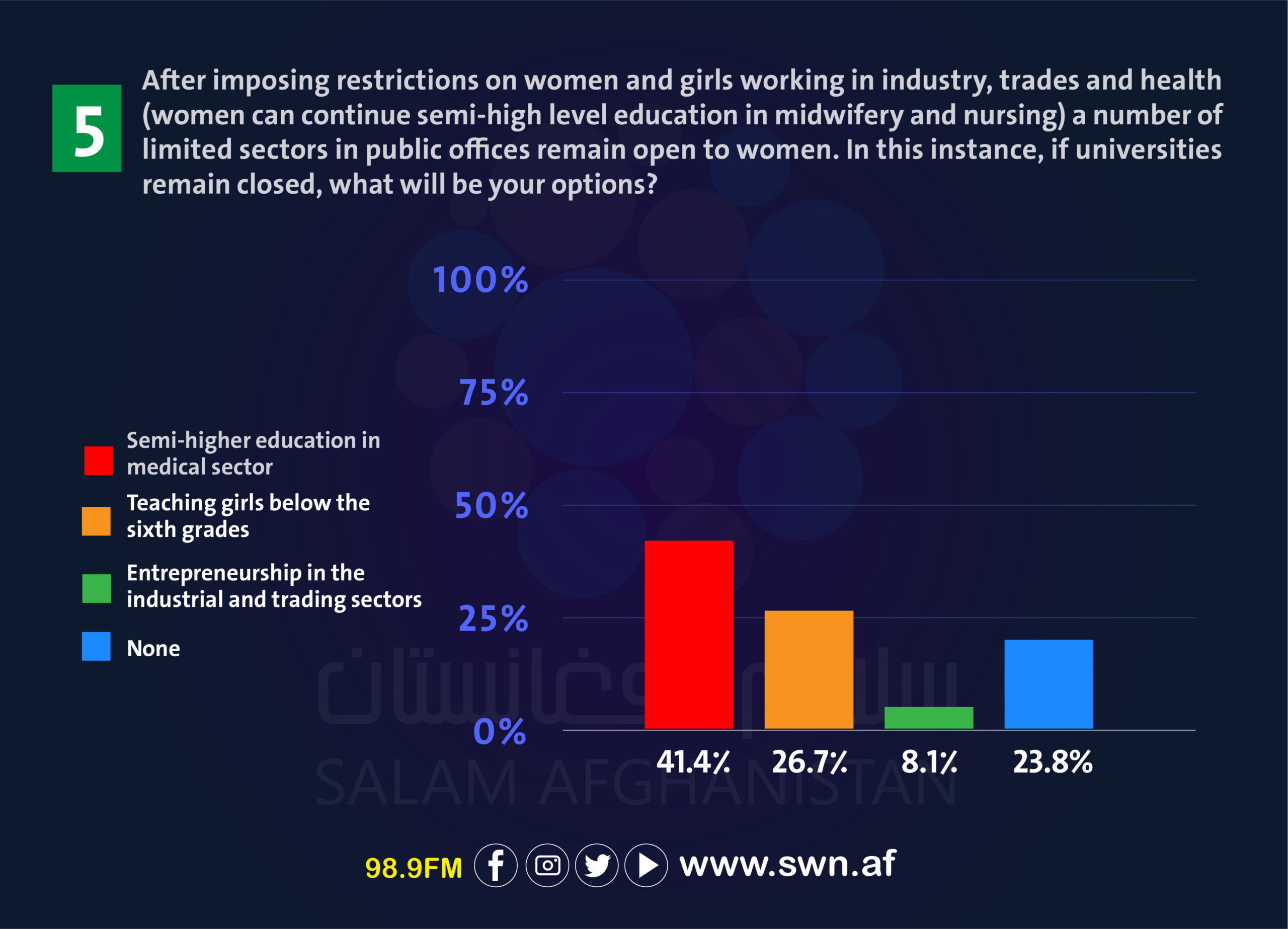
In this survey, the degree of hope of female students for the opening of universities to them was also checked. 45% of them said that the opening of universities depends on the government’s decision, 38.5% said that they do not have any hope for the opening of universities, and 16.5% said that they hope that universities will be opened for girls.
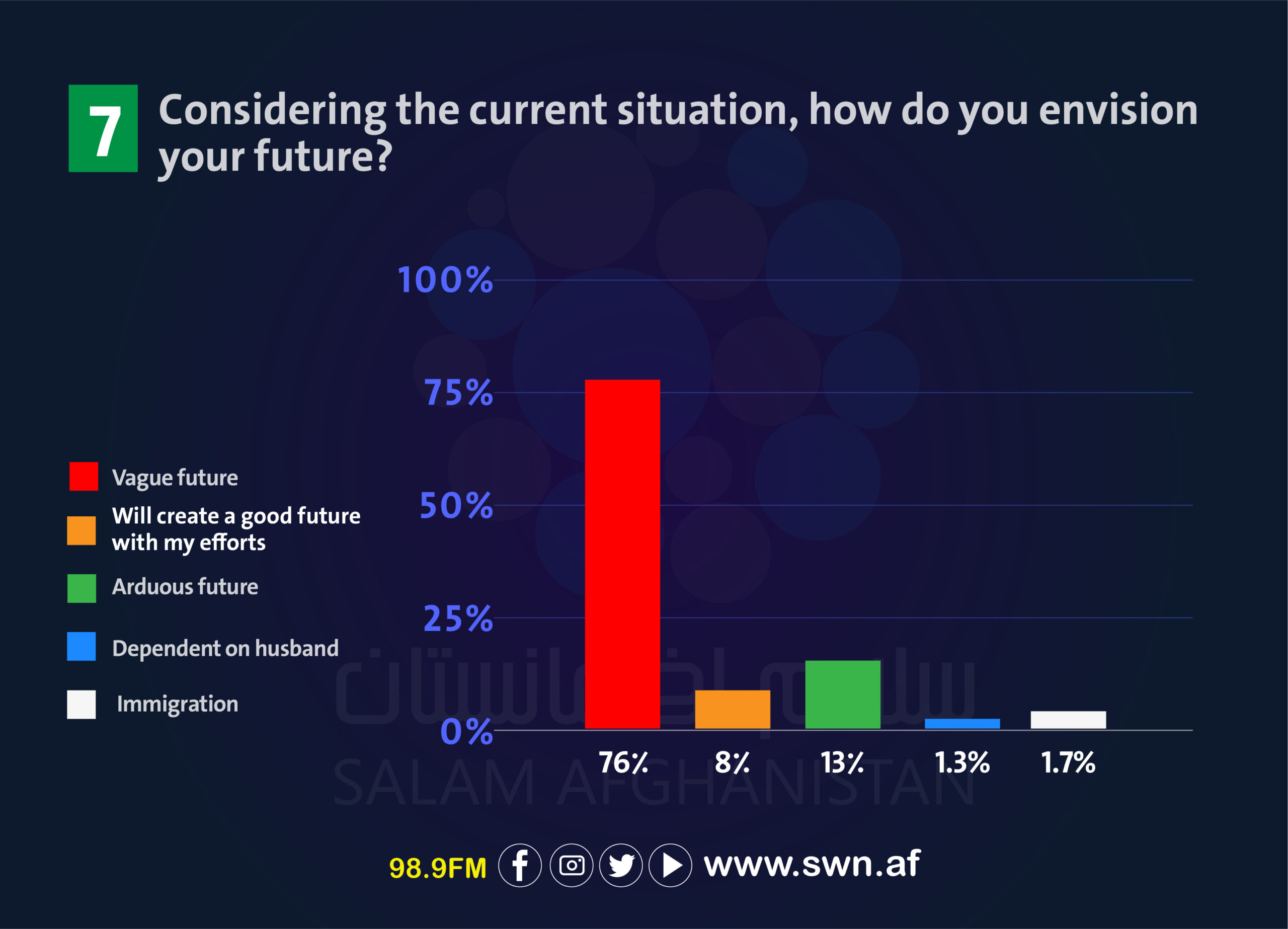
On the other hand, the attitude of the participants of this survey towards their future has also been examined. 76% said that they have an uncertain future ahead of them, 13% said that they will face difficulties in the future, and 8% said that they will improve their future with effort. 1.3% said that they are determined to get married and will depend on their husband.
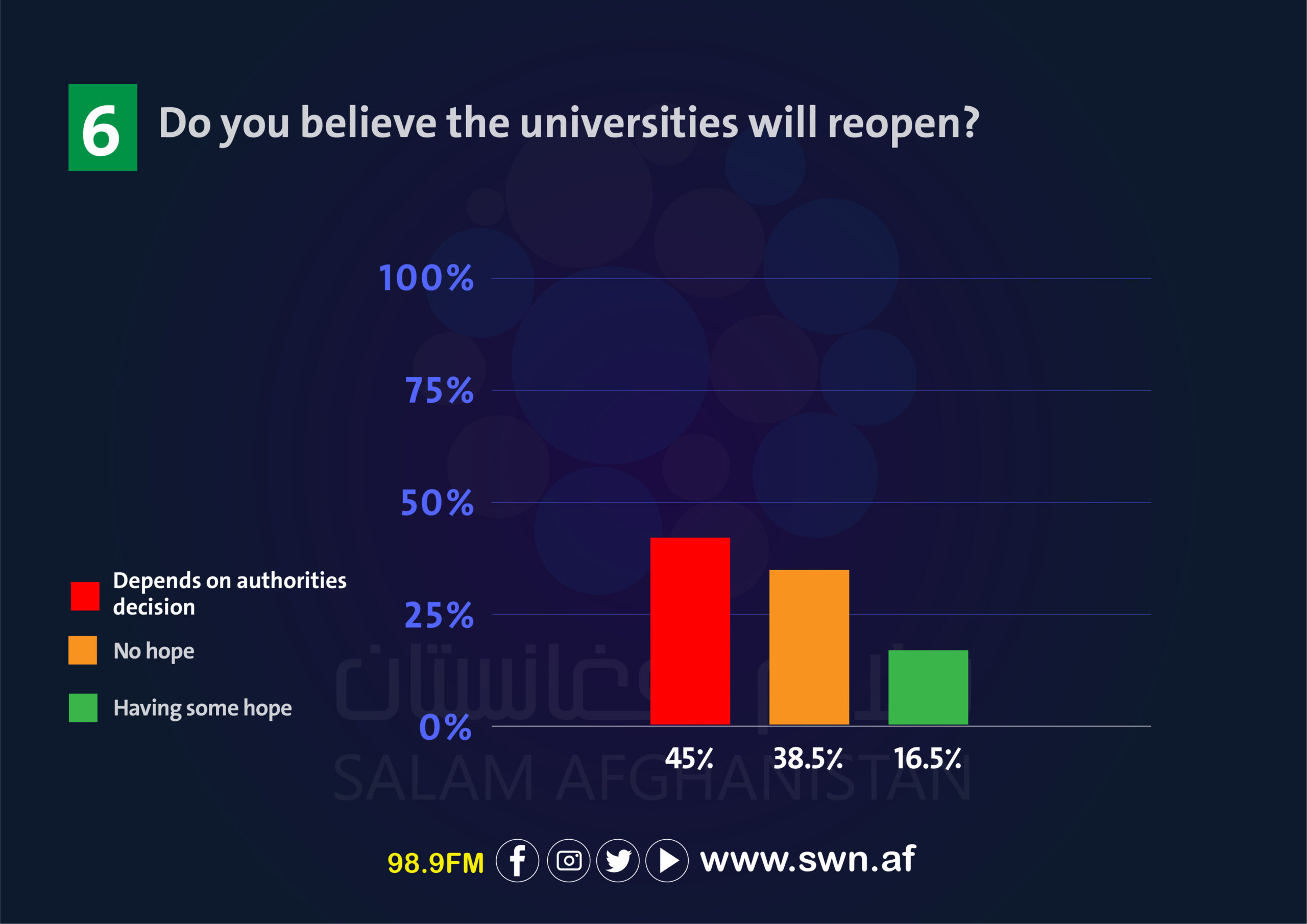
Recommendations:
1: According to the statistics and results obtained from this survey, it is suggested to the caretaker government to open the doors of the university to girls. The caretaker government is also asked to consider alternative programs to raise the level of awareness of female students until the universities are opened.
2: International organizations are requested to launch educational, cultural, work and awareness programs for these girls in order not to waste the talent of female students.
3: Female students are suggested to use alternative programs in the active sectors for women to develop their abilities until the universities open and continue living with a purpose.
4: It is also suggested to the families that in such a situation, they should provide all kinds of support to the girls and provide them with education in their homes.
5: Researchers institutions and media are requested to conduct more research on the situation of female students and analyze more dimensions of this issue.
ENDS

